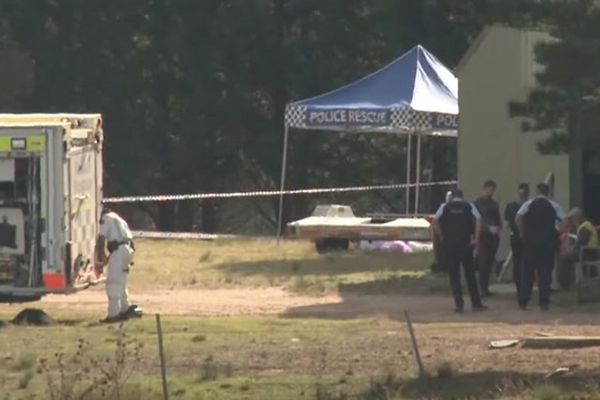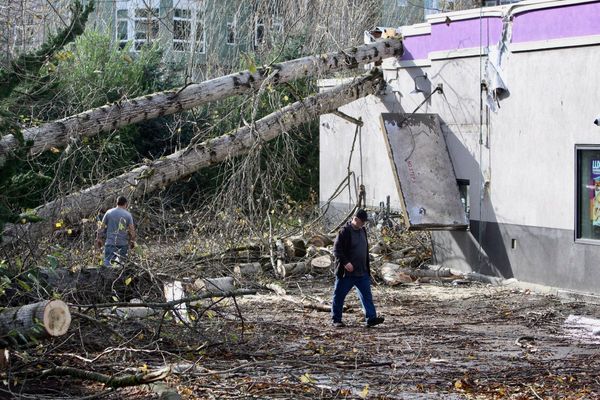The legal showdowns over President Donald Trump’s removals at independent agencies and federal workplaces could ultimately end with Supreme Court rulings that expand executive branch power, legal experts said.
Trump has fired more than a dozen inspectors general, the special counsel meant to protect government whistleblowers, members of the National Labor Relations Board, Equal Employment Opportunity Commission and Merit Systems Protection Board, as well as federal prosecutors who worked on cases related to the Jan. 6, 2021, attack on the Capitol.
Judges in initial court actions so far have sided with those who have filed lawsuits over their removals, and experts said there’s good reason.
Trump has violated three types of broad employment protections that Congress put in place, those experts said. Existing law and Supreme Court cases would protect those employees, and in one case a federal judge even reinstated special counsel Hampton Dellinger.
But the Trump administration has swiftly pushed back in the Dellinger case and elsewhere, with an argument that those protections intrude on Trump’s power as president to run the executive branch as he sees fit.
And some conservative legal experts predict these lawsuits ultimately will backfire once the dust settles. “Most of this judicial resistance/disobedience will get reversed and establish precedents expanding executive power,” Manhattan Institute fellow Ilya Shapiro posted on social media.
Pamela Karlan, a law professor and co-director of the Supreme Court Litigation Clinic at Stanford Law School, said the future of Trump’s efforts would depend on a Supreme Court currently controlled by six Republican appointees.
Karlan said there are three broad categories of protections established by Congress implicated by Trump’s actions so far: independent agency board members, federal officials with specific statutory protections and federal civil service employees. All of those currently have federal law or court cases backing up their constitutionality.
“Unless and until the Supreme Court says we don’t have a civil service anymore, they have protection. It is not easy to fire a federal worker without documenting what they did wrong, and they have a full set of protections and processes they go through,” Karlan said. “You can’t get around that by pulling a TV ‘Apprentice’ style ‘You’re fired.’”
The arguments in the Dellinger case echo those occurring across the federal government, experts said, as Trump has asserted the ability to fire federal officials and employees regardless of the limits Congress put in place.
Trump has reportedly continued the firings this week, telling the inspector general for the U.S. Agency for International Development and several members of the Merit Systems Protection Board to leave. At an Oval Office press conference Tuesday, Trump signed off on a large-scale reduction in the federal workforce, claiming without evidence that workers had attained wealth illegally.
Eight inspectors general filed a federal lawsuit Wednesday challenging their removal and arguing that Trump violated federal law when firing them, adding to the legal challenges facing the Trump administration.
At a House Judiciary subcommittee hearing Tuesday, Georgetown Law professor Steve Vladeck said of the firings: “It’s pretty clear that it violates the statute.” And allowing the president to remove certain federal officials at-will would undermine what Congress intended when it set up independent agencies and inspectors general, he said.
The fact that the fight is likely to play out in the courts alone is partially because of the “completely supine” nature of congressional Republicans, Karlan said.
“Trump seems to have pistol-whipped the entire Republican Party in Congress into completely abandoning its role in oversight of the executive,” Karlan said.
Federal employees
Dellinger filed suit Monday, arguing that firing him from his post as special counsel violated a law that mandates he can only be removed “for inefficiency, neglect of duty, or malfeasance in office,” which wasn’t covered in the one-sentence email he received from the Trump administration.
The office, first created in the Carter administration, protects whistleblowers and federal employees more broadly within the executive branch. In his complaint Monday, Dellinger pointed to an “unprecedented” number of federal employees fired by the Trump administration.
“The Constitution empowers Congress to set reasonable limitations on the removal of the heads of independent agencies and it does not confer on the President an authority to violate Congress’s scheme,” Dellinger’s complaint said.
Judge Amy Berman Jackson of the U.S. District Court for the District of Columbia agreed after a hearing Monday and ordered him reinstated.
The Trump administration has appealed that order and asked Jackson to scale it back, arguing that it “greatly intrudes” on Trump’s authority over the executive branch in a filing Tuesday.
“As a result of the Court’s order, a person the President has chosen to remove from office is exercising executive power over the President’s objection. That sort of harm to the Executive, and to the constitutional separation of powers, is transparently irreparable,” the motion said.
Karlan said that Trump appears to be seeking to expand his power over the executive branch so that he can fire anyone at any time, regardless of the laws Congress passed to limit its scope.
“I find it difficult to say that the president’s executive power is that unlimited, that he is not bound by the laws that create the powers he seeks to use,” Karlan said.
Since taking office, Trump has fired several members of independent agencies across the federal government, leaving several of those agencies with too few members to form a quorum to take action.
Two of those have already filed federal lawsuits seeking to be reinstated. Cathay Harris, a former member of the MSPB, filed a complaint and emergency motion to be reinstated on Tuesday, arguing Trump violated federal law in removing her and other federal officials this week.
“They directly implicate the public’s interest in the smooth functioning of the federal workforce, and they raise troubling questions under both the civil service statutes and the Constitution,” the complaint said.
Another, former NLRB member Gwynne Wilcox, argued that Trump violated federal law protecting her from removal except for cause. Rather than seek a temporary order, Wilcox argued for a permanent finding that she was illegally fired.
“The President’s action against Ms. Wilcox is part of a string of openly illegal firings in the early days of the second Trump administration that are apparently designed to test Congress’s power to create independent agencies like the Board,” Wilcox’s complaint said.
On Tuesday, the judge overseeing Wilcox’s case set an early March deadline for a hearing on her firing.
Karlan said there have been “glimmerings” that some justices on the Supreme Court may want to give Trump the power to fire independent agency board members, “but I don’t know there are five votes for that.”
Neal Devins, a law professor at William & Mary Law School, said the cases seem destined to test a century-old Supreme Court decision protecting members of multi-member agencies like the NLRB, EEOC and Federal Reserve from removal.
Devins said it’s likely the Supreme Court will take up the case, and “the Trump administration has already done what it needs to do” to challenge the legal protections members of the NLRB and other agencies have. For him, it’s not a question of whether the current protections will survive, but “whether the court leaves anything left” after ruling in favor of the Trump administration.
Devins, who has done research on the difference between traditional executive agencies and independent ones, said that weakening removal protections would alter the way Congress typically acts as a check on independent agencies — through negotiations about who is appointed to them. Once those appointments are no longer safe, it changes the calculus, he said.
“Of course, that means that Congress will have no influence unless they have the votes to reject the nominees of the president, which is true of the executive agencies as well,” Devins said. “If Congress wants to have influence, they would have to do it the old fashioned way but there is no reason to think Congress would do that.”
Giving Trump the broad power to fire independent agency board members could also imperil the independence of agencies like the Federal Reserve, Karlan said.
“It’s really hard to see exactly what the basis on the limit among different agencies is,” to allow Trump to fire some agency members but not others, Karlan said.
Federal Reserve Chairman Jerome Powell pushed back on the possibility of Trump firing Federal Reserve board members during a Senate Banking Committee hearing Tuesday.
“Well, it’s pretty clearly not allowed under the law,” Powell said.
The post Trump firing lawsuits could lead to more presidential power appeared first on Roll Call.







